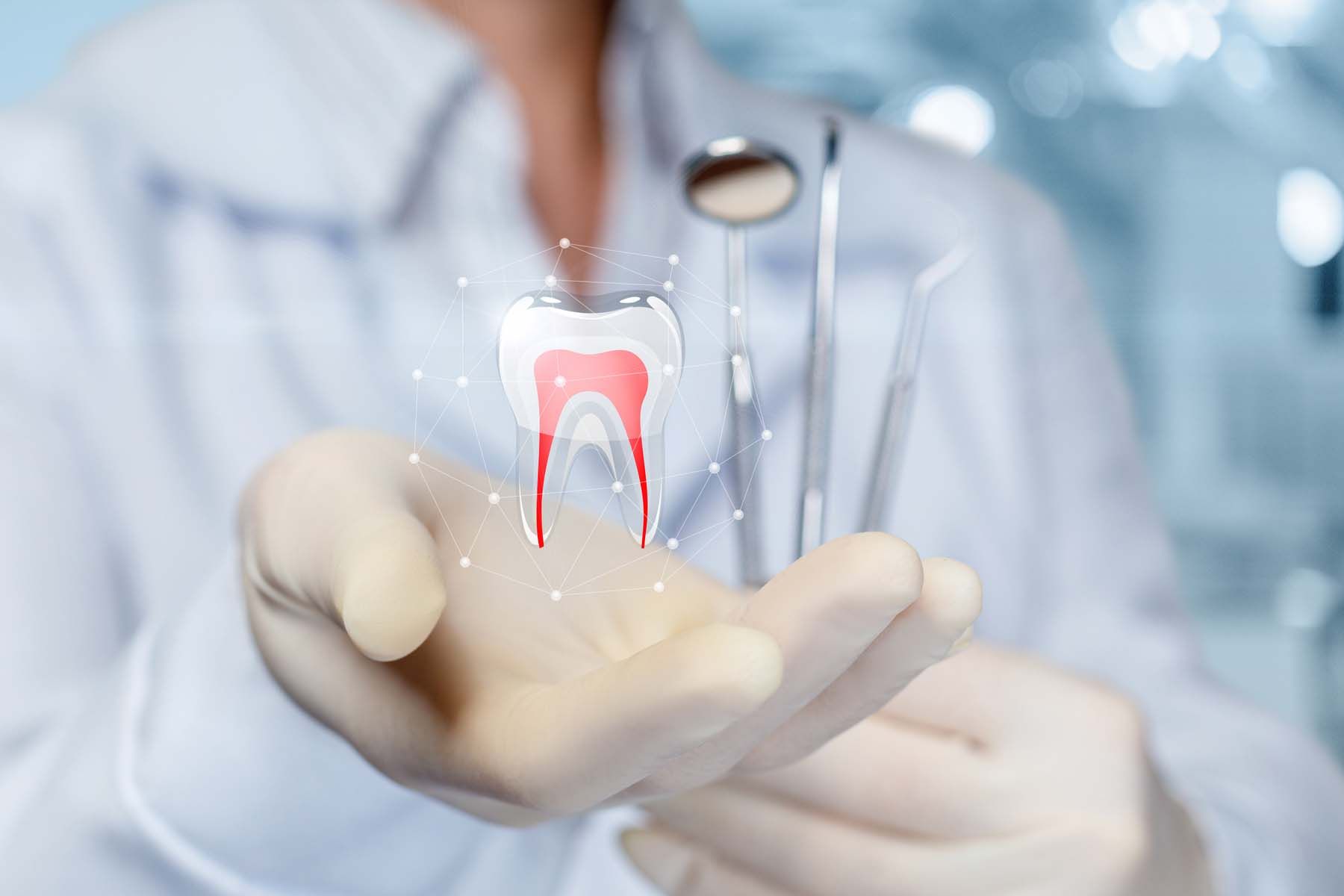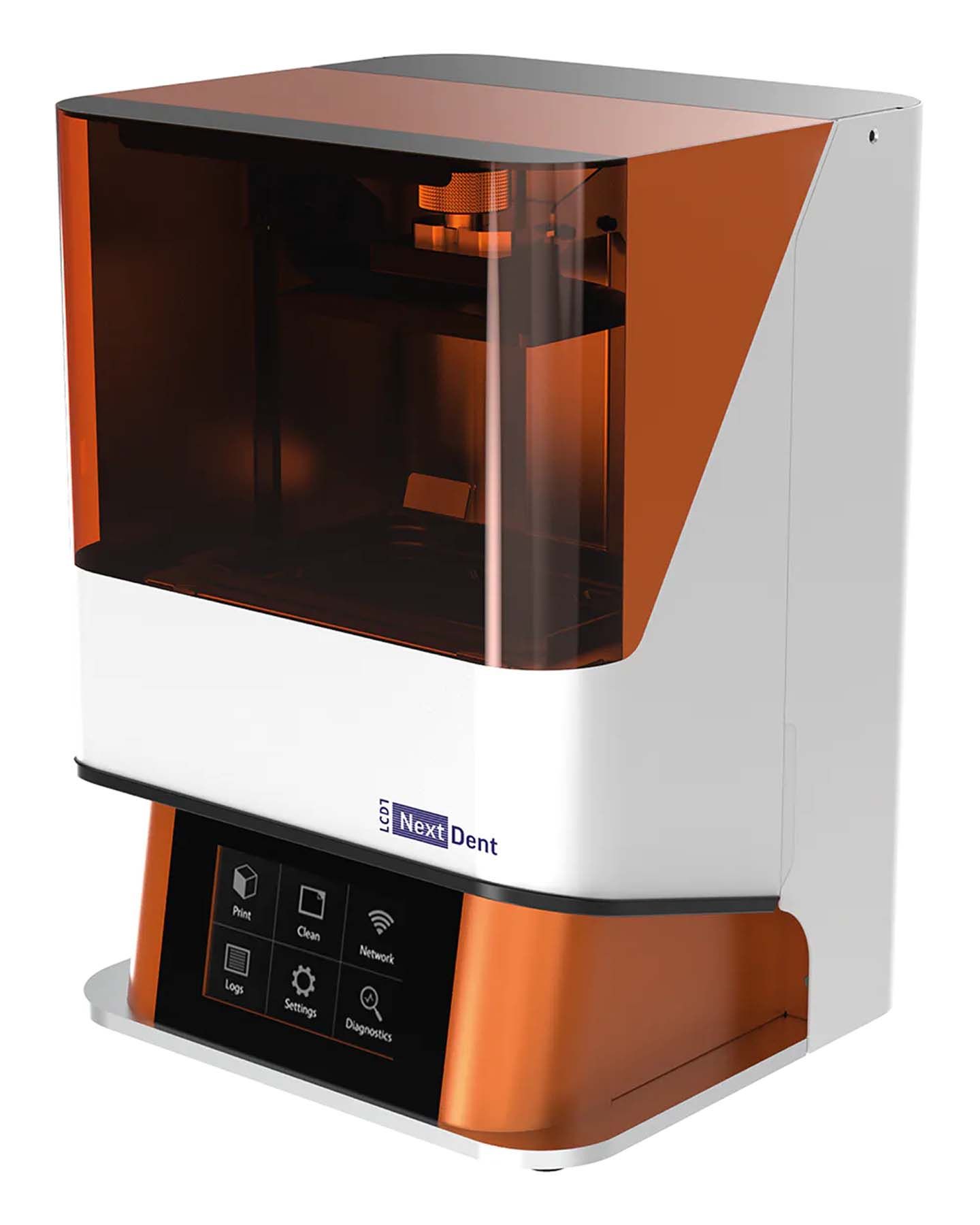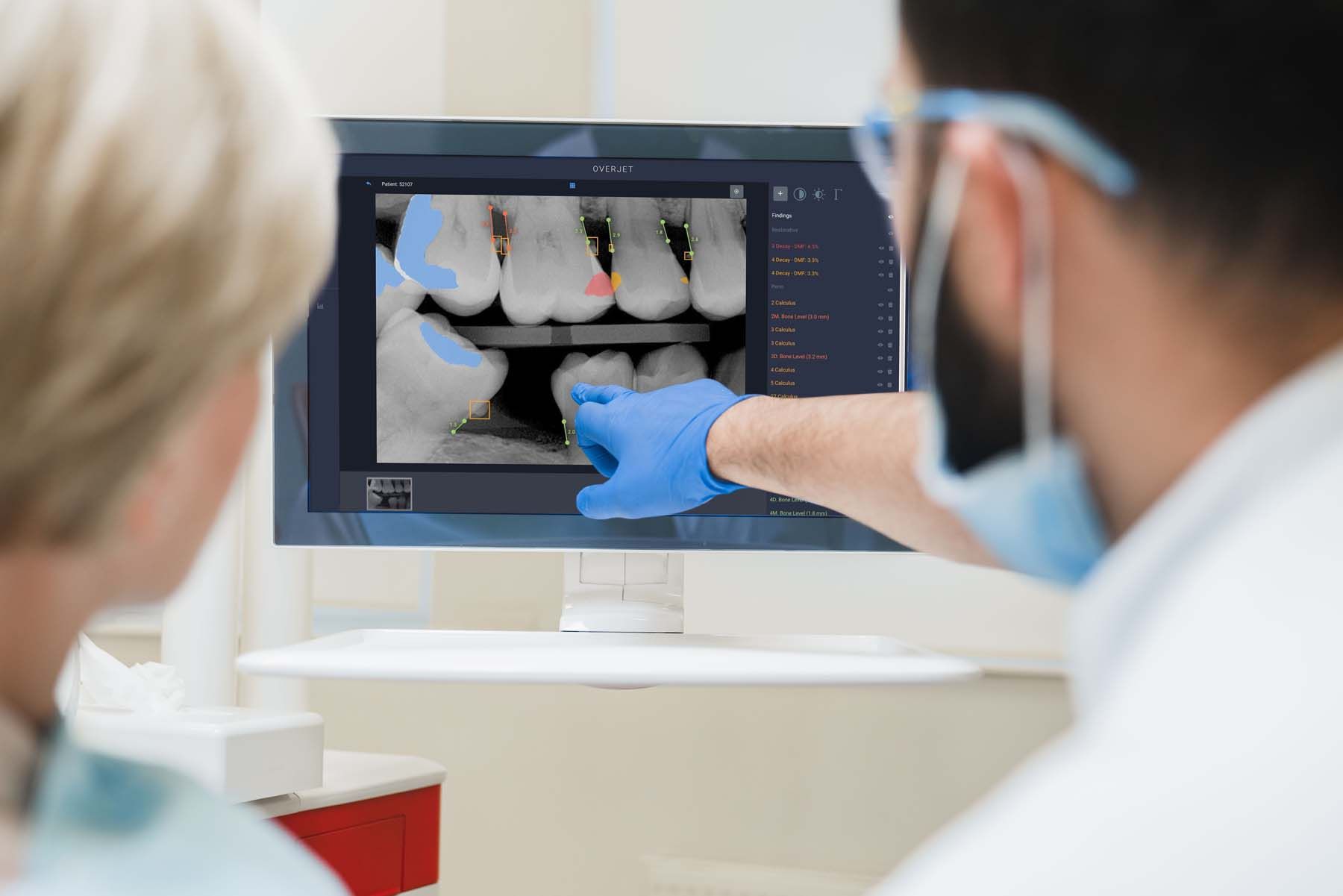- About Us
- Advertise
- Editorial
- Contact Us
- Terms and Conditions
- Privacy Policy
- Do Not Sell My Personal Information
© 2025 MJH Life Sciences™ and Dental Products Report. All rights reserved.
What's Ahead in 2024
Industry experts share their predictions for what lies ahead for the dental industry this year, with artificial intelligence, digital dentistry, additive manufacturing, and preventive care all at the forefront.

A Bright Future Filled With More Personalized, Preventive, and Interconnected Approaches to Oral Health Care | Image Credit: © natali_mis - stock.adobe.com
A Bright Future Filled With More Personalized, Preventive, and Interconnected Approaches to Oral Health Care
Katrina Sanders, RDH, BSDH, MEd, RF, practicing dental hygienist, dental hygiene educator, and international speaker
I envision a promising future for dentistry, shaped by technological advancements and a heightened emphasis on preventive care. As artificial intelligence (AI) continues to evolve, its integration into diagnostics and treatment planning stands out. Machine learning algorithms can swiftly analyze extensive patient data, facilitating early detection of dental issues and the development of personalized treatment strategies. This not only expedites diagnostics but ensures more precise and efficient interventions.
Salivary diagnostics, a frontier gaining traction, holds immense potential. The ability to extract comprehensive health information from saliva opens avenues for early disease detection and monitoring. This noninvasive approach could revolutionize preventive care by providing valuable insights into a patient’s overall health.
Functional dentistry and airway management are also poised to redefine the dental landscape. A holistic approach that considers the interplay between oral health and overall well-being, functional dentistry seeks to address the root causes of dental issues rather than merely treating symptoms. Additionally, integrating airway management into dental care reflects a recognition of the interconnectedness of oral and respiratory health.
In essence, the future of dentistry appears bright, marked by the convergence of AI, salivary diagnostics, functional dentistry, and airway management. These advancements promise a more personalized, preventive, and interconnected approach to oral health care, ensuring a positive impact on overall well-being.

Additive Manufacturing Platforms Are Expected to Deliver Unprecedented Speed and Throughput in the New Year Image Credit: © 3D Systems
Additive Manufacturing Platforms Are Expected to Deliver Unprecedented Speed and Throughput in the New Year
Chuck Stapleton, vice president and general manager for dental, 3D Systems
The adoption of additive manufacturing (AM) in the dental industry has grown significantly in recent years. This is due in large part to the ability of digital dental solutions to drive new levels of speed, productivity, efficiency, and precision in dental laboratories and clinics. As we enter 2024, I believe we will see AM adoption accelerate the most rapidly among larger dental companies. These manufacturers likely have an established AM ecosystem that will allow them to quickly integrate and validate new 3D printing technologies. To meet the growing needs of these dental companies, I anticipate we will also see new AM platforms introduced that will deliver unprecedented speed and throughput for these mass customization workflows.
AM has already proved valuable for a breadth of prosthodontic, orthodontic, and implantology applications. This includes digital workflows for full and partial dentures, custom trays and try-ins, casting patterns for removable partial dentures, orthodontic models, splints, retainers, indirect bonding trays, surgical guides and models, and temporaries. Through 2024, I anticipate we will see a decline in the use of sacrificial patterns (eg, lost wax, thermoforming molds) and more products moving to direct production that can be immediately placed in the patient’s mouth. These devices produced using AM will likely exceed the quality of those produced using traditional methods, which has the potential to positively impact patient outcomes and comfort. I foresee this being used for applications such as direct-printed prosthetics and orthodontic aligners. I also think there will be a more significant shift toward removable cases and fewer implant/fixed cases being done—primarily driven by insurance reimbursements and the economic outlook. We will likely also see an increase in the use of jetting technologies for such applications due to the versatility they offer.
Finally, all these advances in applications are not possible without advances in technology. However, the introduction and adoption of new digital dental solutions are heavily influenced by the regulatory bodies. In the United States, I expect we will see a significantly accelerated pace of product introductions and a more rapid pace of innovation than what will be possible in Europe. This will be due in large part to the impact of the latest changes to the European Union Medical Device Regulation. The requirements have become more stringent, which requires greater time for approvals which in turn is dramatically slowing time to market. I anticipate this will also necessitate further review of the ability to use titanium and stainless steel for dental devices as opposed to cobalt chrome.

Digital Dentistry Is Set to Revolutionize Patient Outcomes and Enhance the Growth and Efficiency of Dental Practices | Image Credit: © Dentsply Sirona
Digital Dentistry Is Set to Revolutionize Patient Outcomes and Enhance the Growth and Efficiency of Dental Practices
Andrew Robinson, senior vice president, North America Regional Commercial Organization, Dentsply Sirona
As we step into 2024, the digital transformation in the dental industry will continue to profoundly impact the delivery of care, helping dental professionals to be more efficient and more effective. Cloud-based platforms are making it possible to seamlessly integrate devices, services, and technologies in the practice and the lab, improving workflows, collaboration with partners, and communication with patients. And Dentsply Sirona is at the forefront of this revolution with DS Core, the heart of our digitally connected solutions.
Our cloud platform DS Core will continue to evolve and introduce new capabilities, making diagnosis accessible and enabling dentists to identify oral health challenges quickly and accurately. Additionally, we have developed advanced patient education tools to enhance treatment understanding. We are committed to democratizing digital dentistry.
In September 2023, we announced expanded workflow integrations between Dentsply Sirona and 3Shape, opening new possibilities for dental practices and labs. This integration will enable dentists to seamlessly connect TRIOS scanners to Primemill and Primeprint for in-office milling and printing via 3Shape Unite, DS Core, and the inLab CAD Software.
2024 promises to bring exciting advancements. Dental professionals can look forward to a more personalized and proactive approach, driven by artificial intelligence and digital workflows that will continue to improve patient care. Our innovation pipeline is robust, and we are dedicated to expanding our integrated technology and digital workflows to support our customers in achieving better patient outcomes and driving growth and efficiency in their dental practices.

Patient Financing Is as Important as Ever for Clinicians and Patients | Image Credit: © Sunbit
Patient Financing Is as Important as Ever for Clinicians and Patients
Jay Letwat, vice president of Dental, Sunbit
The financial and economic challenges of 2023 are likely to continue into 2024, requiring dental practices to focus heavily on increasing operational efficiencies. But getting to better margins via deep, indiscriminate cost-cutting or reactive reductions will most certainly backfire. Rather, the right investments offer unparalleled opportunities, enabling savvy practices to outperform the market and stay profitable.
Investment decisions will not be made lightly. Tighter margins mean that every dollar invested needs to be put to good use in today’s landscape. And we have all seen that the right technology can either offer substantial savings and value—or simply mark another costly investment that goes underutilized.
In order to vet investments, leaders will need to ask these questions of every tech vendor:
1 Will this drive revenue and quickly
show time to value?
2 Will this be broadly applicable vs
narrowly focused?
3 Will this elevate the patient
experience in a material way?
Consider my core area of expertise–patient financing. We all know that wallets are tighter, expenses are up, and insurance reimbursement is flat. However, innovative patient financing is proved to help practices acquire and retain patients and increase treatment acceptance.
At Sunbit we can easily demonstrate that our technology has a positive impact on revenue, brings fair and transparent patient financing to virtually every patient (not just some), and is so easy and accessible that adoption is never a barrier (eg, financing that produces more work for front office teams or requires too much of patients will not succeed).
Yes, the rampant tech buying spree of the past may be over. But that is not a bad thing. Those tech products that offer material value will become even more integral to the industry over the coming year.

A Revolution in How Dentists Diagnose Disease and Present Treatment | Image Credit: © Overjet
A Revolution in How Dentists Diagnose Disease and Present Treatment
Teresa Dolan, DDS, MPH, chief dental
officer, Overjet
Dental artificial intelligence (AI) such as Overjet is revolutionizing how dentists diagnose disease and present treatment, says Teresa Dolan, DDS, MPH, dean emeritus of the University of Florida College of Dentistry, where she served as dean and chief academic officer from 2003 to 2013.
Overjet’s AI algorithms can detect calculus, cavities, bone loss, and other oral health problems. This is just the beginning. In the future, AI will play an increasingly important role in helping dentists with predictive analytics, says Dr Dolan. AI algorithms will be able to analyze patient data, including medical history, lifestyle, and genetics, to predict the risk of developing dental problems such as tooth decay, gum disease, and oral cancer. Dentists will be able to use this information to create personalized prevention plans for their patients, including recommendations for diet, oral hygiene, and other lifestyle factors that can help reduce the risk of developing dental problems. The use of AI for predictive analytics in these medical fields demonstrates the potential of AI to help dentists with predictive analytics in the future.
Some potential examples, according to Overjet, of how AI could be used to help dentists with predictive analytics include predicting the risk of tooth decay, gum disease, oral cancer, and dental implant failure and predicting the need for orthodontic extractions.
Predicting the Risk of Tooth Decay
AI algorithms could analyze patient data such as diet, oral hygiene habits, and medical history to predict the risk of developing tooth decay. For example, AI could identify patients who consume a lot of sugar, have poor oral hygiene habits, or have a history of tooth decay and provide recommendations for reducing the risk of developing cavities, such as increasing fluoride use, reducing sugar intake, and improving oral hygiene habits. CAMBRA (caries management by risk assessment) is an evidence-based approach developed by the University of California, San Francisco to prevent and manage cavities at the earliest stages of development. AI has the potential to take this assessment to the next level by automating the analysis and integrating many types of data in real time to ensure the development of a patient-centric preventive plan.
Predicting the Risk of Gum Disease
AI algorithms could analyze patient data such as smoking history, medical history, and genetics to predict the risk of developing gum disease. For example, AI could identify patients who smoke, have a history of periodontitis, or have a genetic predisposition to gum disease and generate recommendations to reduce the risk of developing gum disease, such as quitting smoking, improving oral hygiene habits, and using mouthwash to kill bacteria.
Predicting the Risk of Oral Cancer
Dental AI software could analyze patient data such as age, gender, medical history, biomarkers, and lifestyle factors to predict the risk of developing oral cancer. For example, AI could identify patients over a certain age with a history of smoking, or have a family history of oral cancer and provide personalized recommendations for reducing the risk of developing oral cancer, such as quitting smoking, reducing alcohol consumption, and increasing oral cancer screening.
Predicting the Risk of Dental Implant Failure
AI algorithms could analyze patient data such as bone density, medical history, oral microflora, and lifestyle factors to predict the risk of dental implant failure. For example, AI could identify patients who have low bone density, have a history of diabetes, or who smoke and generate customized recommendations for reducing the risk of dental implant failure, such as improving bone density, managing diabetes, and quitting smoking.
Predicting the Need for Orthodontic Extractions
Data from a study published in March 2022 showed that machine learning models accurately predicted the orthodontic need for tooth extractions up to 93.9% of the time. Del Real and colleagues published their findings in The Korean Journal of Orthodontics.1
These 5 potential examples, says Overjet, are just some of the ways AI will help dentists determine which patients may be at risk for oral health problems and create appropriate treatment plans to reduce the risk and promote optimal health.

 Download Issue: Dental Products Report January 2024
Download Issue: Dental Products Report January 2024

